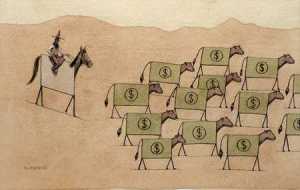Following my annual tradition, I present the retrospective list of the ‘top’ 20 influential papers of 2021 as assessed by experts in Faculty Opinions (formerly known as F1000). These are in no particular order. See previous years’ lists here: 2020, 2019, 2018, 2017, 2016, 2015, 2014, and 2013.

Amazonia as a carbon source linked to deforestation and climate change — “… confirms what the sparse forest inventory has suggested, that climate change and land-use change is driving Amazonian ecosystems toward carbon sinks. … the research team provides a robust estimate of the carbon dynamics of one of the world’s most important ecosystems and provides insights into the role of land use change and potentials for mitigating direct carbon losses in the future.“
Organic and conservation agriculture promote ecosystem multifunctionality — “… a very clear insight into the trade-offs between the different ecosystem services and indicate that yield and product quality are lower in organic systems compared to conventional systems, yet organic systems have higher economic performance due to higher product prices and subsidies.“
Biodiversity of coral reef cryptobiota shuffles but does not decline under the combined stressors of ocean warming and acidification — “… even with similar richness, community function is very likely to be perturbed by ocean warming/acidification with unpredictable impacts on economically important species such as fish and corals.“
Local conditions magnify coral loss after marine heatwaves — “… show that climate-induced coral loss is greater in areas with elevated seaweed abundance and elevated sea urchin densities, both of which commonly result from local overfishing … effective local management can synergize with global efforts to mitigate climate change and help coral reefs survive the Anthropocene.“
Large ecosystem-scale effects of restoration fail to mitigate impacts of land-use legacies in longleaf pine savannas — “… while restoration can have major benefits in longleaf savannas, land-use legacies have clear effects on many aspects of the ecosystem.“
Read the rest of this entry »

















